 Another Friday night, another new venue in Shoreditch. Deep in the basement of the Ace Hotel on Shoreditch lurks a bar called Miranda with a small stage, nice sound system and reasonable stage lighting. The audience was a bit of an eye-opener as well; sparkly dresses and bright eye make-up as opposed to the jeans, cowboy boots and faded tour t-shirts I usually see. The reason for all the finery was the launch of the first EP by Daisy and the Dark, the latest incarnation of Sarah Kayte Foster, a former Mediaeval Baebe.
Another Friday night, another new venue in Shoreditch. Deep in the basement of the Ace Hotel on Shoreditch lurks a bar called Miranda with a small stage, nice sound system and reasonable stage lighting. The audience was a bit of an eye-opener as well; sparkly dresses and bright eye make-up as opposed to the jeans, cowboy boots and faded tour t-shirts I usually see. The reason for all the finery was the launch of the first EP by Daisy and the Dark, the latest incarnation of Sarah Kayte Foster, a former Mediaeval Baebe.
Not surprisingly, Sarah has a superb voice and she’s surrounded herself with quality musicians, including Keltrix violinist Sharon Sullivan to create a full live sound augmented by backing tracks and accompanied by back projection and four dancers; not so much a gig as a multi-media event. Opening with the EP’s lead song “Circus”, the set was well-paced and demonstrated Sarah’s stunning voice in a variety of musical settings as well as across a huge dynamic range.
If you like your live music with a bit of theatre and glamour, this is for you. There’s a lot going on, with guitar, drums, two backing singers and four dancers, not to mention the illuminated, flashing hula hoops. All of this is cleverly woven in to the songs themselves and it works in the same way that a Kate Bush or Bjork show does; there’s always plenty to watch. Sarah has a voice that has been compared to both of those singers (and Florence Welch), but a setting like Miranda also gives her the chance to relate to the audience and create a more intimate experience.
It’s been a while since I saw anything quite like this; a spectacle rather than just a gig, but Daisy and the Dark do it very well indeed and by the end of a short set, the audience was hooked and I was impressed by Sarah’s new material. It’s time for this Daisy to see some daylight. Here are some photos from the gig.
Have a look at the video for “Circus” to get some idea of what it’s all about:
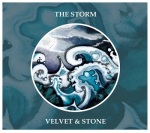 It’s an EP. You’ve got six songs to let the world know how good you are, so you have to grab the listener right from the start and that’s exactly what Velvet & Stone have done here. The first song, “Fisherman’s Blues”, opens with a combination of fiddle and Dave Gilmour-like electric guitar before settling into a more reflective verse pushed along by the bass line and decorated with a descending piano line that could have come from “Riders on the Storm”. But I suppose you want to know about Velvet and Stone. OK, here we go.
It’s an EP. You’ve got six songs to let the world know how good you are, so you have to grab the listener right from the start and that’s exactly what Velvet & Stone have done here. The first song, “Fisherman’s Blues”, opens with a combination of fiddle and Dave Gilmour-like electric guitar before settling into a more reflective verse pushed along by the bass line and decorated with a descending piano line that could have come from “Riders on the Storm”. But I suppose you want to know about Velvet and Stone. OK, here we go.
Lara Snowdon, Holly Jo Gilbert-West and Kathryn Tremlett met in a Devon pub less than two years ago (what is it about Devon at the moment?) and within a very short time won a recording session at the wonderful Convent studio and venue complex as a prize in a singer-songwriter competition. And that’s where they recorded the six songs on this EP, with some help from Ben Nicholls and Andrew Tween (bass and drums) and producer Jack Henderson (also playing guitar and keyboards). The additional musicians have added some deft touches, embellishing without overpowering and leaving the songs plenty of room to breathe.
Lara and Holly have the classic mix of voices, one pure and clear the other slightly more unconventional with a hint of Bjork, and have a folk background in common, while Kat brings her classical influences to the mix: someone also managed to sneak a bit of jazz in there as well. Despite the variety of instruments on the EP, the songs never sound cluttered and the vocals are always allowed to shine through, creating ethereal musical dramas.
“Forget About the Rain” has a hypnotic Celtic feel with some very melancholy violin, “Patchwork” contrasts an almost military drumbeat with piano and violin fills and ethereal vocals and “Same Old Record” has a gypsy jazz feel emphasised by the walking bass and violin while “That Road”, backed mainly by acoustic guitar evokes the Bill Withers classic “Ain’t No Sunshine” taken at a slower pace. The title song builds gradually with rolling piano thunder and swirling violin rain before reaching its peak and slowly fading away; it’s about a real storm, but it’s a metaphor for something on a more personal level as well.
As a sampler, this ticks all the boxes. There are six strong songs, the stylings are varied and the two voices are excellent whether they’re singing together or solo; you can’t ask for much more than that.
And the Devon thing? Velvet & Stone have already supported those Riot Squad favourites Sound of the Sirens this year and it looks like it might be their turn to break out now.
“The Storm” is released nationally in the UK on Friday April 18th.
As a special bonus, here’s a live clip from The Convent:
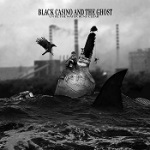 We’ve been waiting for this one for a while now, and I’m chuffed to say it was well worth the wait. The second Black Casino and the Ghost album, “Until the Water Runs Clear” is packed with great individual performances, but the great strength is the way they work together as a band. Elisa Zoot’s voice is stunning and Ariel Lerner’s guitar playing is faultless across a range of styles, but Paul Winter-Hart (drums) and Gary Kilminster play a huge part in the band’s sound, supplying the rhythmic pulse and some melodic and inventive basslines.
We’ve been waiting for this one for a while now, and I’m chuffed to say it was well worth the wait. The second Black Casino and the Ghost album, “Until the Water Runs Clear” is packed with great individual performances, but the great strength is the way they work together as a band. Elisa Zoot’s voice is stunning and Ariel Lerner’s guitar playing is faultless across a range of styles, but Paul Winter-Hart (drums) and Gary Kilminster play a huge part in the band’s sound, supplying the rhythmic pulse and some melodic and inventive basslines.
There are some influences which are woven through the album; there’s more than a hint of sixties pop, and a hint of psychedelia channelled through the trip-hop filter of Portishead and Massive Attack or the shimmering nineties pop of Saint Etienne and Morcheeba. So the obvious opening song is one which sounds like early English folk, isn’t it?
“The Pool” proves that Elisa can do the quieter, more reflective songs as well as the belters, starting with a finger-picked acoustic guitar backing and multi-layered backing vocals, adding shards of percussion, synths and slide guitar before dropping back to the minimalist guitar backing. After the trippy feel of “Age of Contagion” and the monster guitar riff of “Veggie Tarantula” (the two singles so far), it’s a bit of a departure but it’s very effective.
The sixties influence is clearest in “Soul Mall”, the bass-led “Sherry” where Elisa delivers the verses in a cool, almost dismissive style, and “Mr Puppeteer” and “Hoochie Coochie Lover” where Ariel plays in a clipped, precise style that’s very Hank Marvin, or maybe it’s just like Eddie. Apart from the obvious “Lucifer, Lucifer, Lucifer”, there’s a darkness and obsession suffusing the album, and it surfaces in lines like ‘Wish I could skin you, look at what’s in you’ in “Hoochie Coochie Lover”; it’s challenging and not always comfortable but, if comfort’s what you want, you should be listening to Smooth Radio.
There are still a few more stylistic twists and turns to the album; “Tarjeteros” has an Ennio Morricone feel, “Bitter Beast” contrasts a verse with a hint of Bjork with a wall of sound chorus, while the album’s last song, “Solar Storm”, closes the circle with Elisa’s controlled vocal over a sparse arrangement that builds with keyboards and backwards effect before fading into the ether.
I don’t think I’ve heard a better album than “Until the Water Runs Clear” this year; Black Casino and the Ghost have created an album that’s full of hooks to grab your attention, but is full of dark and mystical undercurrents to keep you enthralled.
“Until the Water Runs Clear” is out now on Amazon and iTunes. Go on, treat yourself to an early Christmas present.
If you want to see Black Casino and the Ghost live (and you really should), they’re playing at The Finsbury on December 8th and it’s completely free.
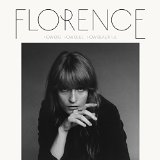 Florence + The Machine is a relatively rare and interesting type of multi-million selling global superstar to be found in this or even the past decade. She is more suited to the mid-eighties/nineties stretch of pop stars that included Kate Bush, Prince and Bjork – artists that used idiosyncratic and sometimes iconoclastic imagery that was key to their success but didn’t define it and whose music was frequently strange and brilliant but sold by the shed load. Where Florence Welch differs from her idols though is that her musical choices so far have found the singer already approaching what could be regarded as caricature of herself. Her debut album “Lungs” was a rag-tag but solid collection of goth-pop which established her eclectic eccentricity and 2011’s highly polished “Ceremonials” had some fantastic songs which were often marooned in a samey, shouty and exhaustingly one-note soundscape. “How Big, How Blue, How Beautiful” sees Florence set out to actively change this, to breath nuance and restraint and personal experiences into an album’s worth of songs.
Florence + The Machine is a relatively rare and interesting type of multi-million selling global superstar to be found in this or even the past decade. She is more suited to the mid-eighties/nineties stretch of pop stars that included Kate Bush, Prince and Bjork – artists that used idiosyncratic and sometimes iconoclastic imagery that was key to their success but didn’t define it and whose music was frequently strange and brilliant but sold by the shed load. Where Florence Welch differs from her idols though is that her musical choices so far have found the singer already approaching what could be regarded as caricature of herself. Her debut album “Lungs” was a rag-tag but solid collection of goth-pop which established her eclectic eccentricity and 2011’s highly polished “Ceremonials” had some fantastic songs which were often marooned in a samey, shouty and exhaustingly one-note soundscape. “How Big, How Blue, How Beautiful” sees Florence set out to actively change this, to breath nuance and restraint and personal experiences into an album’s worth of songs.
Markus Dravs has taken over almost all production duties from Paul Epworth (who still co-produces one track here) and has laid down the law, it seems, telling Welsh that certain well-worn subjects are off-limits, such as water metaphors (a few still slip through the net, excuse the pun) and an early song called “Which Witch” bought to him by Welch was rejected because of song title only (and that too still appears, but as a bonus track only). He wanted to put her voice up front and to be more exposed and vulnerable, less multi-tracked, and for the music to also have space to breathe. Will Gregory, the introvert half of Goldfrapp, was bought on board as Welch wanted lots of brass and she’s certainly got her wish. It seems that there was some compromise on both sides, as this is a different Florence album in part, but it is not to be considered as any real, radical departure in sound. With the strength of songwriting on display here and a successful transition to more interesting and diverse soundscapes this is not important, it’s the most balanced and cohesive album that Welch has made thus far.
The first song to be heard from “How Big, How Blue, How Beautiful” was the striking “What Kind of Man”. With Welch’s voice manipulated to echo that of Karin Andersson from The Knife, she sounds genderless and possessed and it’s something of a shame that guitars and drums crash in all too soon. The mania and panic associated with Welch and evidenced here again is offset beautifully by a return to the coolness of this initial refrain though and “Ship to Wreck”, with its soaring near gospel middle-eight, continues with the indie rock motifs . The title track’s opening line ‘between a crucifix and the Hollywood sign’ is not the only thing that sounds like you might hope a Madonna track would in 2015; it has a spaciness and warmth that is designed to be heart- swelling and it is. The long instrumental play-out is the most optimistic that a Florence track has ever sounded, assertive trumpets and forthright strings herald a new dawn with all of its possibilities. Sounds cheesy perhaps but it’s sincere and as gorgeous as hell.
“Various Storms & Saints” and “Long & Lost” continue with an acoustic, bare bones but lush instrumentation and “Caught” is a mid-tempo r’n’b song with an unexpected country sway and is swoonsomely heartbroken. Over a plaintive organ and understated orchestration it is “St Jude” which cements absolute melodic perfection with Welch’s forever fallen angel, compulsively drawn to chaos. “Delilah” and “Third Eye” will delight the Florence diehards with both tracks pulling across the established, bombastic and commercial sound from her previous two albums and turning the dial up even further to not-quite ludicrous settings. Album closer “Mother” incorporates all of these ingredients but stirs them about with a 1970’s blues-rocker shtick that creates something altogether more strange and the final, thrashing fifty seconds genuinely excite. Florence + The Machine may never be able to do subtle but with “How Big, How Blue, How Beautiful”, Welch has made considerable progress with making music that is more complex, satisfying and timeless sounding than before, never alienating her current fan base and undoubtedly attracting many more new ones in the process.
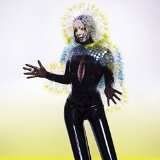 ‘How will I sing us out of this sorrow?’
‘How will I sing us out of this sorrow?’
Following eight albums that have all been conceptual to varying degrees and have covered such themes as introversion, extraversion, the voice as a multi-instrument and musical nature via apps it is both shocking and affecting to experience Bjork’s latest subject, herself and her family. Bjork, artist Matthew Barney and their children have demonstrated ably that is possible to retain privacy no matter however big your star may be and however hard a brutal media tries to prick it. With “Vulnicura” then a massive rupture has occurred to the point where Bjork specifies which songs on the album relate to which periods in the relationship when the rot began to set in for her and Barney, who are now most definitely separated following over a decade together as a kind of exotic, unattainable art couple. The fact that this album originally appeared two months earlier than its intended release date, because of a full online leak, and with no promotional material only added to the voyeuristic tingle and brutality of the unexpected openness that Bjork allows us.
There is no return to left-field pop or immediate accessibility on “Vulnicura”. The majority of the nine tracks are well over six minutes long; “Black Lake” is just over ten, and there are surprising nods to her late nineties material throughout. There are some gorgeous melodies here but the album is structured, and to a large extent sounds exactly like, a classical piece, which is primarily due to the return of gigantic, stirring and occasionally violent string parts – only the shortest track does not feature an orchestra. Opening track for example, “Stonemilker”, set ‘nine months before’, is lush, stately and warmly reassuring and suggests little unrest. But the first audible line ‘moments of clarity are so rare, I’d better document this’ indicate frustration and the interruption of stability.
“Lion Song” opens with the kind of stacked-up and distorted accapellas first heard on “Medulla” but this is not an indication of what follows. ‘Maybe he will come out of this (loving me), maybe he won’t, somehow I’m not too bothered either way’ is a typically poetic, plain-speaking Bjork lyric and forms the sweeping and woozy, eastern-influenced chorus; the friendliest on the album. This is tied together by verses that are led by the string arrangements and which dip and dart broadly in a style most resembling a cautionary show tune. “History of Touches” accounts the last time a couple sleep together following years of unity and togetherness. It’s probably the saddest song here and is beat-less with ethereal but zig-zagging synths supporting an accepting and almost disconcertingly confident vocal.
“Black Lake” is the eye of the storm, ‘my shield is gone, my protection is taken’. Lines are sung in a plaintive, near-defeated way before string notes are drawn out for up to almost 30 seconds to seemingly allow Bjork to recompose and continue. Straightforward songwriting and exquisite orchestration dominate and at one point beats threaten to take the mood elsewhere but such interruptions are premature and silenced by violins. Devastating but restrained, it is Bjork playing to all her strengths.
The second half of the album, songs that deal predominantly with the post-relationship period, has several tortured, schizophrenic movements that are contained within the songs themselves. “Family” and “Notget” are “Vulnicura”’s most difficult tracks and also provide some of its most artful and sonically visceral moments. Fully immersed in rage, bewilderment and the almost liberating feeling of letting go of something that has ended, however paining. “Family” opens with the astonishing line ‘is there a place that I can show my respects for the death of my family?’ and is musically ominous, becoming increasingly terrifying. Both these songs are co-written and produced by Arca and are where his presence is most felt, those however expecting “Vulnicura” to sound like an Arca record with Bjork vocals will be disappointed. The creaking and constantly erupting beats and soundscapes, overall, still sound more or less as they always have done – like a Bjork record. The final third of the album is about recovery, friendship and moving forward and final track “Quicksand”, all luminous electronics, staccato strings and drum and bass, speaks about the future of women and the need to accept adversity as well as joy.
“Volta” and “Biophilia”, albums that immediately proceeded this, were often deliriously chaotic, cryptic and for the most part interesting, but lacked the essential emotional core that has grounded all of Bjork’s work; on “Vulnicura”, we are again back on steady ground. With her career retrospective at the MOMA, spanning the last twenty years of her work, it is both a relief and a genuine thrill to have one of pop’s most important, explosive and influential stars making music that again matches, and in places surpasses, her best. Bjork has, as she has always done, followed her heart in order to heal her heart and never has this sounded as critical as on “Vulnicura”. Singing her way out of sorrow is instinctual and much more than a career move, it has helped save her and for that we should be grateful.
 M.I.A. has gone through a bit of a hard time. Her last album “Maya” was not loved, she was accused of hypocrisy because she may or may not have consumed truffle french fries whilst being interviewed by The New York Times and her relationship with the obsessively revered Julian Assange (which is continued here) bothered some and problems with both her record company and her own marriage were publicly discussed. She is a fascinating artist, as unique and important as Bjork and, like Bjork, her work could only ever be hers. In respect to the first criticism at least, 2010’s “Maya” was widely slated as inaccessible, ugly-sounding and, the inevitable, ‘hard to love’. Even early musical partner Diplo expressed his concern about her apparent lack of judgement and choice of collaborators but this reaction was one that perplexed. Featuring her most brilliant pop moment ever with “XXXO”, a lovely cover version of Spectral Display’s “It Takes a Muscle” and “Born Free” with its insane ginger-haired army video and Suicide sample, the album was thrillingly eclectic and intricate. It differed from previous releases though, in that M.I.A. had strayed somewhat from sounding like her and this is what’s addressed in “Matangi”, M.I.A. sounds a lot like herself again.
M.I.A. has gone through a bit of a hard time. Her last album “Maya” was not loved, she was accused of hypocrisy because she may or may not have consumed truffle french fries whilst being interviewed by The New York Times and her relationship with the obsessively revered Julian Assange (which is continued here) bothered some and problems with both her record company and her own marriage were publicly discussed. She is a fascinating artist, as unique and important as Bjork and, like Bjork, her work could only ever be hers. In respect to the first criticism at least, 2010’s “Maya” was widely slated as inaccessible, ugly-sounding and, the inevitable, ‘hard to love’. Even early musical partner Diplo expressed his concern about her apparent lack of judgement and choice of collaborators but this reaction was one that perplexed. Featuring her most brilliant pop moment ever with “XXXO”, a lovely cover version of Spectral Display’s “It Takes a Muscle” and “Born Free” with its insane ginger-haired army video and Suicide sample, the album was thrillingly eclectic and intricate. It differed from previous releases though, in that M.I.A. had strayed somewhat from sounding like her and this is what’s addressed in “Matangi”, M.I.A. sounds a lot like herself again.
The title track, the first of many here produced by UK electro, fidget-house master Switch sees the pair reunited from the highly-acclaimed and successful “Kala” album, sounds like a continuation of the burundi beats, squawks and chaos of 2006’s “Bird Flu”. The two part time signature of “Come Walk With Me” comes from the same place as “Jimmy”, also from Kala, which M.I.A. remembers as being inspired by pop songs she heard on the radio as a kid. It’s exuberant and child-like and at odds with the majority of M.I.A.’s discography. “Attention” is vocodered, cut to ribbons, archetypal M.I.A and will irritate the hell out of some. Julian Assange helped her find as many words as possible that could contain the word ‘tent’, acounTENT’ being a favourite although she may be pushing it a bit with LoubouTENT shoes.
The skanking “Double Bubble Trouble” shockingly uses the lyrical hook from Shampoo’s massive pop brat hit from 1988 ‘Trouble’ and is conformation of the amount of fun that M.I.A. is having here. The lightness that was all over her debut album has certainly returned and on “Bring the Noize” and “Y.A.L.A.” she has created two of her biggest and brutish club tunes to date. Lyrically the rhymes do not stand up to close scrutiny, less political than ever before aside from the politics of being M.I.A.. “Boom Skit” talks about her most recent battle with the Super Bowl organisers and “Bad Girls”, sounds as elegant and fresh now as it did two years ago, is about, well, how bad she is.
“Matangi” tends to fall down somewhat with its mid-tempos. Where “Maya” had the gorgeous and spooky “Space” and “Kala” and the gargantuan “Paper Plans”, this has two (very similar) versions of the same song “Sexodus” and “Exodus”. Initially intended for Madonna, or at least offered to her but subsequently refused, it would have been interesting to hear the superstar’s take on this and her proven track record to pull out a melody would have come in useful here. Keeping the slower tracks bunched together at the album’s close only highlights the weakness of them musically and melodically; spaced out during the entire run of the album they may have been more welcomed as a breather from the relentless tempo and charged attitude. It’s only on the minimal, popping shuffle of “Lights” that M.I.A. sounds refreshed and intimate.
“Matangi” has been heralded as Mathangi “Maya” Arulpragasam’s most spiritual album to date and this statement may confuse but it is not as misleading as initially perceived. Lyrically it may not bare soul and penetrate in the way imagined but musically and rhythmically it references M.I.A.’s own culture as a London-born, Sri Lankan woman and it’s this sound that is at the forefront, left and right in every track. The chants, the percussion, the drums, the melody styles and, on “YALA”, the explicit statement, ‘If we only live once then why do we keep doing the same shit? Back home where I come from we keep being born again and again and again. That’s why they invented Karma’. On “Kala” she explored other cultures and sounds but this is M.I.A. reasserting her own sound and place in popular culture and music. It may not be as aggressively forward-sounding as some of her previous material but “Matangi” is a celebration of M.I.A.’s ability to provoke and assault in her most joyously sounding album to date.
 Glasser’s second full-length album is less touchy-feely than her indie electro 2011 debut, the wondrously rich and textured “Ring”. With lead singer Cameron Mesirow now cast as a high glamour, high concept academic, ‘”Interiors” is Glasser’s attempt to interpret human experiences with man-made environments, structures like New York’s Guggenheim maybe, and channel them into predominantly man-made music. It’s not as labour intensive as it sounds and on the whole is not a difficult album to listen to; it’s certainly more aloof than her previous work but concessions to a more nurturing and familiar sound do finally rise to the top. There is also a triptych of songs about windows.
Glasser’s second full-length album is less touchy-feely than her indie electro 2011 debut, the wondrously rich and textured “Ring”. With lead singer Cameron Mesirow now cast as a high glamour, high concept academic, ‘”Interiors” is Glasser’s attempt to interpret human experiences with man-made environments, structures like New York’s Guggenheim maybe, and channel them into predominantly man-made music. It’s not as labour intensive as it sounds and on the whole is not a difficult album to listen to; it’s certainly more aloof than her previous work but concessions to a more nurturing and familiar sound do finally rise to the top. There is also a triptych of songs about windows.
“Shape” opens up with languid, humming synths and swaying coos. It’s eerie but not alienating and is Glasser’s starting point before she reaches beyond her imagined comfort zone ‘I live on the beach, water surrounding me, and it’s got too deep …my home has no shape, nothing to sustain me, but it keeps me safe from imagined pain’. “Design” calls to mind Roisin Murphy’s work with Mathew Herbert in its vocal tics and sounds of machines trying to represent nature and design and the seductive use of strings and sliding synth effects on “Landscape” provoke and engage. “Keam Theme”, the one true dancer here, uses midtempo house beats and hi-hats and although Bjork references come far too easy (the similarities between this and “Vespertine” are numerous) it’s hard not to think of “Hyperballad” as its older, more street smart, sister.
The aforementioned “Window i” with its gentle pads and clicks is intimate but hollow and “Window iii” and “Window ii” (in that order) are both short and serve more as interludes but they are also redundant here. The promised visuals that are due to accompany the upcoming tour may help to explain their presence but, unaccompanied at least, it’s a minor experimental indulgence. More positively they also usher in the album’s recurring use of Cantonese mandolins which, along with saxophone, helps inject the steely soundscapes with human touches. Far-eastern musical influences were also heard in “Ring” but the tribal and more harmonious and inclusive sound of that collection is almost entirely absent from “Interiors”. The slower songs towards the album’s end are quite lovely though, “New Year” in particular has a surprisingly romantic and old fashioned melody with a traditional song structure and is in direct opposition to the somewhat lonely sounding, shiny and self-contained first half.
Glasser has made an album that positions her among the more experimental art-pop genre of electronic artists such as Julia Holter and Laurel Halo, it actually sees her sitting precariously between these two specific artists; the surreal, lyrical nature of Holter meets the electronic forward thinking soundscape obsessions of Halo. “Interiors”, however, falls short of its aims and ultimately doesn’t become the original and career-defining album that it could have been; the material is not consistently strong enough to permit this. Glasser will no doubt bring this music to life over the next year or so with touring and a continuation of the already captivating visuals we’ve seen with the ‘”Design” video and this is something to look forward to. The more intriguing prospect though will be where will Glasser go next; an exciting artist with her best material to come.
 A remix album that surpasses the original recording is a rarity indeed. For a relatively small scale, indie electronic band like Ultraista it feels perfunctory to issue one at some point and along with contemporaries such as Au Revoir Simone and Lali Puna, as well as big hitters like Bjork and Lady Gaga, the thing they all have in common is wildly varying levels of success and are all too often the ultimate exercise in self- indulgence.
A remix album that surpasses the original recording is a rarity indeed. For a relatively small scale, indie electronic band like Ultraista it feels perfunctory to issue one at some point and along with contemporaries such as Au Revoir Simone and Lali Puna, as well as big hitters like Bjork and Lady Gaga, the thing they all have in common is wildly varying levels of success and are all too often the ultimate exercise in self- indulgence.
Ultraista’s self-titled album, from which the remixers all derive their source material, was released last October and considering the enticing concept of Thom Yorke’s right hand man, Nigel Godrich, making female vocal lead electronica, the actual reception was not entirely ecstatic. It was glitchy and introverted, not necessarily intended on occasion I’m sure and partly due to Laura Bettinson’s vocals often being quietly pushed back into the mix, which undermined the impact of some of the stronger melodies. The main problem of what is still an interesting and thoughtful album is that, apart for the trip (predominantly) hop of slowed down “Party Line”, it was an album with little variation of beat, rhythm or structure. This album then is the ideal companion piece, bringing out the necessary colour and bite.
All ten of the original songs get a new treatment and unlike many other remix excursions there aren’t six versions of one particular track leading to repetitive ear strain injury early on (there are additional versions on the digital version though), with the majority thankfully not exceeding the five minute mark. “Smalltalk (Four Tet)” may stutter and rattle enthusiastically but the melody which was previously implied but not exploited now shines through and “Party Line(Canon Blue)” brings Bettinson’s vocal out of hiding and makes it a tight, bright thrill; the same applies to the now delightfully menacing “Easier (Zammuto)”.
“Static Light”, always one of their strongest tracks, was originally swamped by synths and drones and now Matthew Herbert turns it into a buzzing, tumbling pop rush reminiscent of his more major production work with Bjork and Roisin Murphy. Oddly now becoming better known as a prolific remixer (how exactly did this happen?) than a film director, David Lynch brilliantly turns the averagely competent “Strange Formula” into a dusty and scuzzy blues drawl. “Bad Insect” and “Our Song” don’t fare as well, being overwrought drum and bass and blissed out coffee table respectively, but two out of ten ain’t bad.
In many ways a template for the successful remix project, Ultraista have proved that there is still life in what is a really a marketing tool if quality control is paramount and the DNA of the original material remains; this is certainly the case here. This collection is cohesive and thoughtfully complied and if it in fact had been released in this format, it might have succeeded in making a stronger impression than the original recordings themselves. As it stands, the remixers have done an exceptional job in exposing Ultraista as the dynamic, quietly foreboding band that they have the potential to be.
 “When I Was Your Girl”, the lead single from Alison Moyet’s eighth solo album, suggests it is business as usual for the big-voiced Essex star; jangly soft rock pop, Radio 2 playlisted if it’s lucky, powerful and instantly identifiable vocal. You know the sort of thing. It’s a trick though, a decoy and a very welcome one at that. For a very long time, nearly 30 years in fact, I have hoped that Moyet would record an electronic album again, something reminiscent, admittedly, of Yazoo, the 1980’s dream man- woman electro pop duo that Moyet was one half of, and finally it’s arrived; but can anything be worth that long a wait?
“When I Was Your Girl”, the lead single from Alison Moyet’s eighth solo album, suggests it is business as usual for the big-voiced Essex star; jangly soft rock pop, Radio 2 playlisted if it’s lucky, powerful and instantly identifiable vocal. You know the sort of thing. It’s a trick though, a decoy and a very welcome one at that. For a very long time, nearly 30 years in fact, I have hoped that Moyet would record an electronic album again, something reminiscent, admittedly, of Yazoo, the 1980’s dream man- woman electro pop duo that Moyet was one half of, and finally it’s arrived; but can anything be worth that long a wait?
The Minutes” is produced and co-written with Moyet by Guy Sigsworth who has worked with some very big, predominantly female stars. His involvement with Bjork for example resulted in some of her very best work and he encouraged Madonna to be both introspective and accessible on “What It Feels Like For a Girl”, but this doesn’t sound like Bjork or Madonna. It does however contain the same musical blueprint that can be found all over his recent work with Alanis Morissette (the material in question here is much stronger though) and in particular the one-off band he formed with Imogen Heap in 2002, Frou Frou. Entirely electronic, Sigworth favours big gestures both musically and vocally from the artists he collaborates with and with Alison Moyet he seems to have found the perfect, immaculate voice. “Horizon Flame” is a strong, showy, cinematic start with synthetic strings (which I can always spot and never like), and a brooding mood. “Changeling” demonstrates early on the worst excesses of Sigworth’s production, which can be very everything but the kitchen sink. A bit of dubstep, robotic r’n’b, drum ‘n’ bass, you name it, but god it’s nice to have Moyet snarling again; ‘how does anybody get to work like this’ she stroppily demands. Once this is out of the way though, the two really begin to find ways to push and pull each other in some very interesting directions.
“Love Reign Supreme” is joyous, speeding pop and “Right As Rain” is a pure, simple electronic dance track, not self-consciously camp, which some may have hoped for, but a tight rhythm track with Moyet seductively taunting the instantly appealing melody. Even better, and there are some brilliantly crafted songs here, is the slower “Filigree” which has shades of “The Winner Takes It All” melodically and musically is straight-up Yazoo. Whether this was conscious or not we will probably never know but it is such a joy to hear. Moyet inhabits these tracks with an ease and confidence that should be taught, her many years of experience and success shining through and she should be equally credited with some brilliantly imaginative, poetic language in respect to the song writing (‘I fell into a cinema, watching pictures in a dream, shifting the fidget into still, nine other people take their leave’; the opening lines of “Filigree”) which is of a consistently high quality. The final track “Rung By The Tide” merges the kind of folk song structure that has been prominent in Moyet’s more recent work with a pop sensibility, showered with some breath-taking electronics which create a portrait of something wild and beautiful. It’s the sort of thing that Ellie Goulding was aiming for on her last album but didn’t have the wherewithal to pull off.
Alison Moyet has been quoted as saying that this has been the best time she has ever experienced whilst recording an album, the freest she has felt in the studio and most true to what she dared to create now, in 2013. This kind of statement does not necessarily bode well for an artist of Moyet’s stature, it can suggest that self-indulgence and loss of quality control may have run amok but this isn’t the case here, with Guy Sigsworth turning out to her most compatible musical partner since Vince Clarke. It’s lovely to think that after 3 decades and with no jazz standards or cover versions insight, as she feared she would be forced into recording by her record company, Alison Moyet has made a superb grown-up, inventive pop record and satisfyingly, it’s her best yet.
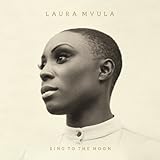 Laura Mvula is a British soul singer and this her debut album; let’s leave it at that shall we? The accompanying brouhaha and hyperbole should be ignored and put aside with immediate effect and instead let’s concentrate on what’s actually on offer here, what we can listen to and is it in fact any good?
Laura Mvula is a British soul singer and this her debut album; let’s leave it at that shall we? The accompanying brouhaha and hyperbole should be ignored and put aside with immediate effect and instead let’s concentrate on what’s actually on offer here, what we can listen to and is it in fact any good?
“Like The Morning Dew” opens “Sing To The Moon” with a vocal that sounds like a hybrid of many singers, British predominantly, that sound a little bit like Amy Winehouse, maybe some Emile Sande thrown in for good measure and then someone old school and monumental like Nina Simone or Billie Holliday. Laura Mvula has an arresting voice then, albeit one you think you may have heard before. There are also choirs, luscious harps, big orchestras, military drums, trip hop beats occasionally and things can become very quiet before they go very loud; it’s what you might call ‘organic’. You might think of the The Carpenters or indeed The Beach Boys in respect to the multiple harmonies. It’s nice and it’s pretty more than anything, which may be a surprise given this seemingly crowded sonic template, and things continue in this vein for the first four songs, the most pop song on here, “Green Garden”, being the highlight.
Just when I begin to here to fear that maybe Mvula was going to suffer from Florence syndrome where every track followed the same structure, the same huge chorus, sonic crashes but without too much of an actual song to grab onto, my ears stood to rapid attention with the arrival of the fifth song, ”Is There Anybody Out There?” Airy and menacing and haunting, it’s a fantastic song and an incredibly detailed and warm arrangement with Laura and a double bass sounding lonely but in complete command of the deserted universe she appears to be trapped in. If I had to make a comparison it would be to Bjork and I wouldn’t bandy that around willy-nilly, somewhere between the “Homogenic” and “Vespertine” albums when her classical and pop influences merged beautifully and the avant garde just began leaking in and hadn’t yet taken over.
From this point on things begin to take flight and on occasion, soar.’”Father, Father” diverts somewhat from the musical richness that prevails here being predominately piano with Mvula’s strident, defensive vocals sounding like a hymn, a prayer to an absent parent. It sounds like a traditional song but, due mainly to the odd phrasing of her performance particularly in the repetition of the last minutes but modern too. “That’s Alright” is self-possessed and uplifting, a non-preachy ‘fuck you’ to race and body image stereotypes and expectations and is another great song. Mvula writes or co-writes every track here. “I Don’t Know What The Weather Will Be” and the title track “Sing to the Moon” are mid tempo and gorgeously spacious and “Flying Without You” is a show-stopping, whooping mix of girl group pop and musical theatre; think “South Pacific” meets the Sugababes but played out in a church, the on-going lyrical celebration of individuality and freedom continues to be the predominant theme of this album.
Like Lianne La Haines, Adele, Florence and, er, Ellie Goulding before her there are many accolades being thrown at Laura Mvula at the moment and we should all do our best to ignore all of this, they just cloud the issue. She isn’t like any of these artists and considering she only has less than 15 songs to her name so far we should wait and see what happens. Mvula seems open to many things and is almost certainly in love with making music and it can take some time before a performer finally becomes the artist that truly fits them. Until then this is an invigorating, beautiful piece of work and I recommend you listen to it.


